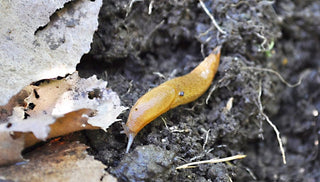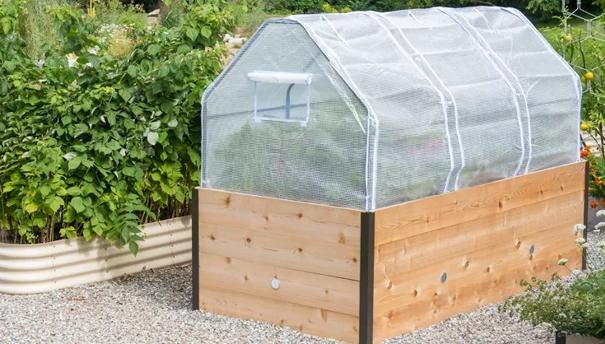Large, irregularly shaped holes in leaves and shiny slime trails across foliage are telltale signs of slugs. These soft-bodied creatures will eat almost any type of plant material, but they are especially fond of tender new growth. In the vegetable garden, slugs target the leaves of salad greens along with newly emerging seedlings; they will eat holes in tomato fruits too.
Slugs range in size from 1/2" to 5" long and they may be orange, gray, black or brown. After overwintering in the soil, adult slugs emerge in the spring and lay hundreds of eggs near the soil surface. Young slugs begin feeding close to where they hatch, but slowly move throughout a garden. Slugs are most active at night and in wet, cool weather. When it's hot and dry, slugs are rarely a problem. In general, slugs dislike plants with leaves that are glossy, waxy or hairy. They also seem to avoid plants with strong-smelling foliage, such as rosemary, marigolds, and lavender. Slugs are found throughout North America.
Prevention and Control
- Keep plant foliage relatively dry to deter slug activity. Leave space between plants for good air circulation. Thin out crowded plants and remove potential hiding places such as boards or buckets. Water in the morning, so plants can dry before evening.
- Pull back mulch from around vulnerable plants. If slugs become established in your garden, remove and avoid using organic mulches such as straw and leaves.
 Made from a naturally-occurring mineral, Slug Magic stops slugs from feasting on your prized hostas, strawberries, and lettuces.
Made from a naturally-occurring mineral, Slug Magic stops slugs from feasting on your prized hostas, strawberries, and lettuces.- Protect vulnerable plants by surrounding them with a barrier of crushed eggshells or diatomaceous earth. Renew the barriers as needed.
- Use Slug Magic pellets. They contain the active ingredient iron phosphate, a naturally occurring mineral. Once slugs ingest it, they stop eating and die within a few days. Sprinkle it on the soil surface near affected plants — pellets remain effective for a full two weeks even if it rains.
- Make your garden a haven for natural slug predators such as birds, frogs, toads, and ground beetles.
- Handpick and destroy slugs by dropping them in a jar of soapy water. You'll capture more if you go "hunting" at night. Use a slug trap or fill shallow containers with beer and sink them into the soil to trap slugs and snails.
- In the evening, set out food traps such as cabbage leaves and pieces of potato. In the morning, destroy the slugs that have gathered in the traps.
- If slugs are especially prevalent in your area, choose slug-resistant plants.





